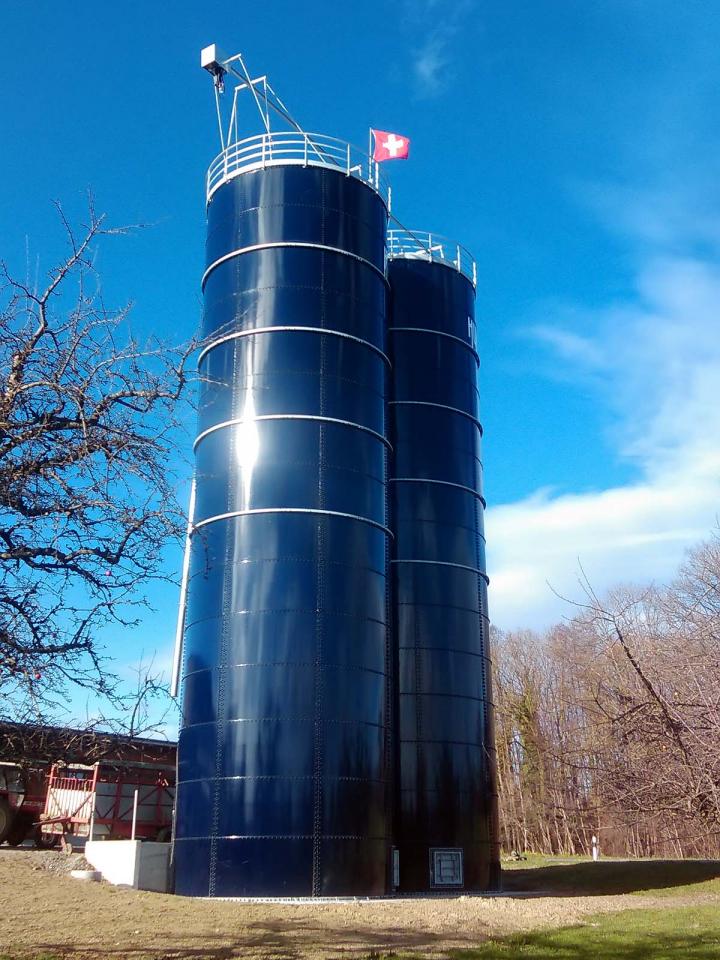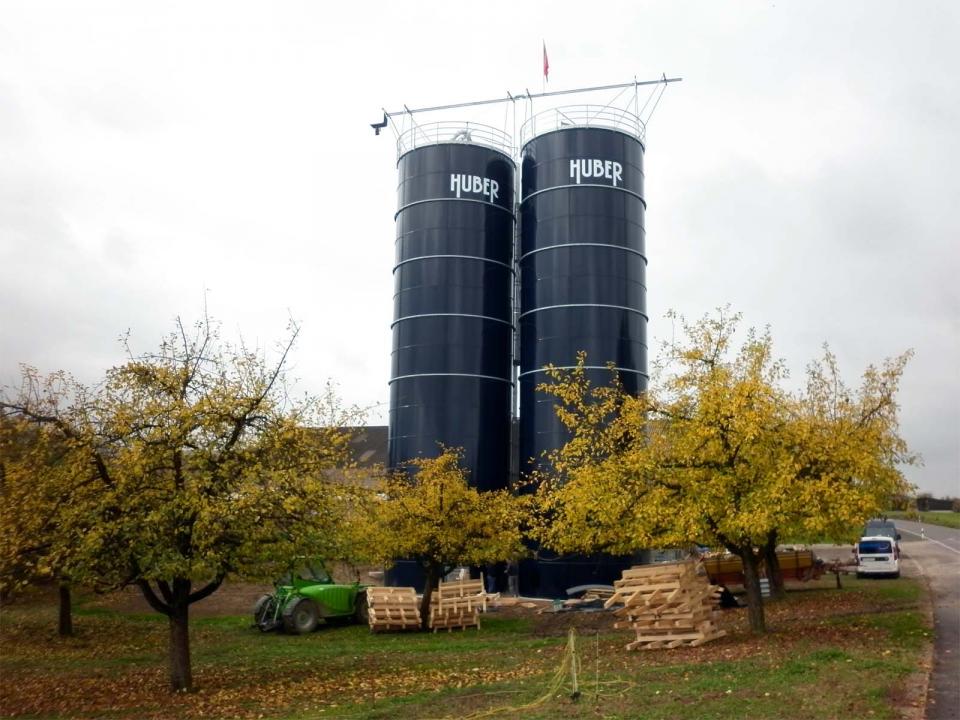TECHNICAL DESCRIPTION
Silos are primarily usedfor storing wet maize, silage, haylage, and dry grain.
Maize, silage and haylage are conserved in the silo with lactic acid created by lactic bacteria under anaerobic conditions and with the formation of CO2. Lactic acid functions as a preservative and decreases the pH to 4-5, and also emphasises the taste properties of the feeding mixture, making itmore tasty for animals.
For maize, the carbon dioxide which is created is captured in a special sack and is later used during the gradual off take of the maize to refill the empty space in the silo preventing oxygen from entering, which would damage the maize during storage.
Silos are made from bolted sheets with a surface protection resistant to lactic acid. The entire silo is hermetically sealed. Individual sheets are bolted and sealed with a special sealant which is also resistant to the given environment. The conical roof is also bolted and sealed. An inspection opening, safety pressure and vacuum valves, an opening for loading and,if required an automatic valve for loading, are located in the spherical cap. A connection for balancing CO2 sacks can be installed in the roof.
For dry grain silos, it is essential that no further biological processes occur in the material, as it must be stored in a dry state.
Silos accessories:
- ladder-hot-dip galvanised
- inspection entrance- hot-dip galvanised
Silos for maize and dry grain:
- stainless steel discharge hopper
- screw conveyor
The silo can be loaded from the inlet hopper in two ways:
- using a pneumatic conveyor - often automated and includes caps on the valves for loading and off-loading
- using a screw, bucket and belt conveyor, or gravitational conveyor for maize and dry grainsilos
Advantages of the use of silos:
- environmentally friendly storage - no storage in foil
- the silo can be directly connected to a cattle-feeder; mobile conveying technologies are not necessary
- the oldest grain is used first, so the silo does not need to be emptied completely before loading
- simple operation during loading and off-loading
The capacity series for standard silos is listed in the table.



